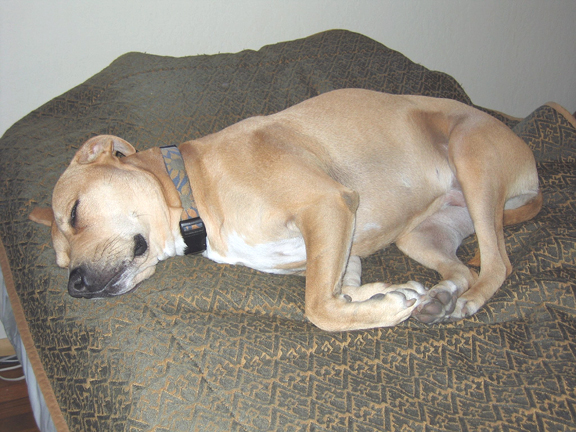Fully Integrated Circuitry
A four- minute video available on the Facebook site, “Your Amazing Body” seeks to answer the question, “what happens to your brain while you sleep?”
My wish for everyone is that nothing happens TO their brains while they sleep, because, as the video and much of neuroscience suggests, a lot is happening in our brains while we sleep.
Sleep occurs in stages.
Stage 1 sleep is light sleep. Brain wave activity is a bit slower than when we’re awake. We breathe normally, and, during stage 1, as our muscles relax, sleepers sometimes feel our bodies move suddenly and involuntarily as we transition away from wakefulness. Those of us who practice yoga, sometimes contract and release our muscles so we can fall asleep a bit more easily.
During stage 2 sleep, we are less easily awakened. Our brainwaves continue to slow; our muscles relax sporadically in fits and starts; our heart rate slows, and our body temperature cools. Sleep experts suggest that people sleep in a cool, dark room.
Sleep stages 3 and 4 are known as sometimes referred to as slow wave sleep, deep sleep or delta wave sleep. Delta waves are slow frequency, high strength brainwaves. The body is immobile and there is no eye movement. During deep sleep, blood pressure falls, breathing slows further, and body temperatures drops even lower. Paradoxically, it is during deep sleep that children might experience night terrors, sleep walk, or wet the bed.
Sleep experts theorize that the amount of deep sleep we naturally get is based on the amount of deep sleep we need. For this reason, scientists theorize that deep delta wave sleep is involved with learning, physical recovery and ongoing central nervous system change. And, as we get older, we seem to spend less time in this deep sleep.
Dreaming is often associated with the stage of sleep known as REM sleep. REM sleep involves rapid eye movement and, often, vivid dreaming. Dreaming, however can occur in all stages of sleep throughout the sleep cycle (which would explain why sleepwalking and night terrors occur during non-REM, deep sleep).
During REM sleep, the heart rate increases, and breathing becomes irregular.
The eyes move quickly under the eyelids while the body’s muscles seem unable to move. The reading I’ve done about REM sleep suggests that during this phase, the brain may be working harder than it does when we are awake. As we cycle through sleep, the REM phases increase in duration as we get closer to waking. REM related muscle immobility likely occurs to protect us from physically acting out our dreams, or, perhaps, our memories.
Those of us who have delved into dream analysis generally keep notebooks on our nightstands, so we can write down our dreams before we forget them. Neuroscientists suggest that dreaming and REM sleep reviews, replays and consolidates our experiences into our memory. Physical brain trauma such as
concussion, surgical alterations and stroke, are known to impact immediate memory formation and storage. These injuries also interfere with the normal sleep cycles involved in memory consolidation. It was not that long ago that neuroscientists began to theorize that REM sleep and its physical eye movement was involved in the brain’s neural and synaptic development both in utero and throughout life.
I believe, in keeping with psychiatrist Carl Jung’s belief in cultural archetypes, during childhood, our minds begin to store beliefs and theories that are taught to us and our own individualized experiential memories. Such experience and teachings don’t always agree, leaving us to sort things out over a lifetime. And while Jung’s mentor, Sigmund Freud, believed that children don’t begin to form memories until two or three, it seems more logical to believe that children don’t store memories coded in language until children learn and understand the words associated with their daily and felt experiences. The fact that very young children experience nightmares suggests that children’s brains replay physical pain, fear, and other feelings.
Our bodies and muscles have memory.
Dogs don’t articulate their opinions or describe their adventures to us at the end of the day. Still, anyone who has had a dog has likely seen that dog’s feet move, as if running, while the dog is asleep.

Sadly, many lab animals, including human beings, have been tormented and deprived of sleep to see what happens. Sleeplessness causes cognitive and mental breakdown. Sleeplessness can kill you. While we are asleep, our brains, while consolidating memories, pruning or connecting neurons, also flushes out toxins in a sleep-related increase of its own cerebrospinal fluid.
Education researchers and therapists are making connections about how physical movement, including eye movement, integrates physical sensation and thought. Eye movement or eye tracking is used in Eye Movement Desensitization and Reprocessing, EMDR, a therapy geared toward alleviating the panic and anxiety associating with post-traumatic stress. Post-concussion therapy often includes eye movement exercises thought to integrate the brain hemispheres. Our eyes move naturally and quickly when we sleep. And, despite our mind-over-matter dichotomies and beliefs that we are somehow separate from our bodies, we all must sleep.
Nature provides us with fully integrated circuitry, operating 24/7, designed to keep us alive, healthy, and consciously aware.











